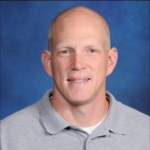Transformative Educational Leadership Journal | ISSUE: Spring 2018
How do education leaders best support building capacity while validating the work of both formal and informal leaders in their systems? In this article, Todd Manuel will describe a leadership series run in School District 67 that emphasizes leadership as a shared responsibility, not as a rank. Meeting over eight Saturday mornings over the past year and a half, thirty educators have committed to being part of this project.
By Todd Manuel
A Narrative Reflection
Recently, I listened to the NPR podcast S-TOWN (2017). In this most downloaded podcast of all time, S-TOWN reporter Brian Reed travels to Woodstock, Alabama to interview John B. McLemore who had contacted Reed, encouraging him to come to his town to research an alleged murder. What begins as a piece of investigative journalism, quickly shifts into a nuanced character study of McLemore: a colourful, eccentric, and quite possibly brilliant individual. McLemore is passionate about and skilled at fixing antique clocks. As a horologist, an individual who studies clocks and timekeeping, McLemore understands that there are no two antique clocks with the exact same mechanical structure. Each timepiece tells its own, unique story.
How do we embrace the unique stories of every student? Where do we find time to understand how individual learners “tick” while making sure we all have our clocks set to the same position: minute hands pointing towards the same competency-focused learning intentions?
Perhaps part of the answer can be found in the Okanagan-Skaha School District’s “Learning to Lead, Leading to Learn” Project. This initiative aimed to build capacity in teacher leaders. During an eighteen-month period, thirty educators meet on eight Saturday mornings. The series is designed to provide teacher leaders the opportunity to develop leadership skills in ways that are, as suggested by Breakespear (2017), “embedded (happening within the context of work); personal (owned and driven by the leader while impacting on mindsets and identity); and continuous (so there is no end to leadership growth)” (p. 9).
Led in partnership with myself and retired Superintendent Bev Rundell, teacher leaders have been encouraged throughout the series to anchor an innovative practice through the Spirals of Inquiry (2015). So far, this series has resulted in
- transformative conversations focused on moving practice towards deep learning for students and educators
- collaborative learning opportunities that have led to reflective change in practice
- risk taking that has had an impact on student learning both in classroom settings, and
- school wide inquiries.
All Okanagan-Skaha teachers were invited to participate. An additional invitation was sent to a neighbouring district, SD 53, and a number of our teacher colleagues from Okanagan-Similkameen also joined our cohort. While we initially anticipated fifteen to twenty responses, we were pleasantly surprised to receive thirty-five responses indicating an interest in joining the series. Clearly, there is an interest amongst teachers to find space to connect, collaborate, and co-construct learning through the lens of leadership.
During our first meeting we concentrated on the concept of leadership as a flat hierarchy. Participants examined Simon Sinek’s (2009) work on leadership in which he articulates the idea that leadership is about responsibility rather than rank. Sinek’s work serves as a reference point for the team, shifting the focus away from traditional hierarchy and toward the collective responsibility of participants to lead change in schools.
In keeping with the metaphor of horology and my role as lead time keeper for this project, I would like to briefly highlight the unique work of three educators involved in this series who have engaged in professional inquiry. Each of these inquiries have their own distinct focus, yet are clearly connected to our District’s larger mission: to engage in innovative practices that build student voice and capacity for self-reflection while simultaneously looking to connect all of our work to the larger theme of student wellness.
Literacy Expo – Student Voice through Choice
Based on a scan of her school and its efforts to increase student achievement in literacy and overall interest in reading for pleasure, Nikki Johnson, a teacher at Skaha Lake Middle School (SLMS) wondered how student engagement and agency around literature might be increased school-wide. Nikki began by taking her inquiry to a group of SLMS teachers who became dedicated to that same question.
Her hunch led her to wondering if creating a school-wide literacy expo would help increase student interest and engagement with literature. The event would include student-created displays presenting books of their choice. Part of this inquiry was an attempt to build greater student interest and agency around literacy than typically accomplished with computer-based reading programs that test student comprehension.
What started as a hunch and developed into an inquiry question eventually settled into an expo that grew to become a school wide event that took over the gym. Teachers provided feedback to students, elementary students were invited to come and visit the displays, and a  publisher even set up a booth. Much to the surprise of Nikki and her colleagues, and without formal planning by staff, a number of students showed up in costume of a character from the novel they were focusing on. A few even brought pet animals that represented characters from novels they had read.
publisher even set up a booth. Much to the surprise of Nikki and her colleagues, and without formal planning by staff, a number of students showed up in costume of a character from the novel they were focusing on. A few even brought pet animals that represented characters from novels they had read.
The level of student engagement in the process was an unmitigated success. Even the school’s most reluctant participants found a way to have their voice included in the expo. For example, one student let his teacher know early on that he would not be participating in the literacy expo. When given the opportunity to express his learning in a different manner, he decided to write his own book. While he was not prepared to set up a display like all of the other students, he did agree to speak with interested students and teachers about his work. He set up a “presentation station” in the bleachers. When I came by to see him, I found anote he had indicating that he “would be right back.” Just one  example of how learners who were provided an opportunity to have an authentic voice demonstrated their learning in creative and personal manners. Continuing to collaborate with her colleagues and administrative team, Nikki is excited to see how this inquiry will evolve in the future.
example of how learners who were provided an opportunity to have an authentic voice demonstrated their learning in creative and personal manners. Continuing to collaborate with her colleagues and administrative team, Nikki is excited to see how this inquiry will evolve in the future.
Responding to Student Need – Building Capacity in Mental Wellness
A counsellor at KVR Middle School, Nick Korvin saw student anxiety and mental wellness as a theme worth addressing. Connecting with teacher leaders from other schools who shared similar concerns, Nick’s scan led him to his hunch: students need time for one-to-one conversations intentionally designed to build positive relationships between students and teachers.
He had a chance to work through his hunch when considering how students in a couple of Grade 6 classrooms were struggling with peer conflict. Nick and the team designed a deliberate way to build time into the school day for the classroom teacher to get to know each student better: Tea Time. The teachers brought a tea kettle and cups to class and scheduled time in their afternoon blocks to connect with each of their students for a one-to-one, open-ended conversation meant to build authentic relationships. Tea Time is simply an opportunity for students to have their voices heard by teachers in a unique manner grounded in an ethic of care.
Teachers involved in this strategy noted a positive change in the culture and climate of their classrooms, and student feedback has been similarly positive. As Tea Time has illustrated, sometimes our intentions can be as powerful as our actions in setting positive tones in schools.
From Engagement to Agency – Providing opportunity for authentic student voice
KVR Middle School teacher Rochelle Hannon’s inquiry focused on how to create meaningful, real world writing opportunities for students that would connect them to their community. Rochelle’s hunch was that if she provided authentic opportunities for students to write, their level of commitment and engagement to the writing process would increase. Through collaboration with colleagues and members of the community, Rochelle was able to give students a voice through Travel Penticton’s blog site. Students had the opportunity to write as a youth influencer on why Penticton is the best place to live, visit and to engage in sport and recreation, as well as other community topics. With the support of Travel Penticton (citation + add to references), students to had their writing published. As Rochelle noted after the first student blogs were published:

Students’ writing was also featured in a local media outlet, further amplifying students’ voice in a meaningful way. By giving students an authentic writing opportunity connected to place and space, Rochelle has seen an increased level of engagement and enthusiasm not typical in middle school writing assignments. She continues to develop community partnerships as her inquiry evolves that will provide ongoing opportunities for student voice to be represented in authentic ways.
Inquiry, Learning, and Keeping Time
In S-TOWN (2017), Brian Reed discusses how critical it is to use witness marks when fixing antique clocks, as no two clocks are the same. By leaving this mark (usually a scratch or indent on the timepiece on the adjusted area) the next horologist to work on that particular clock will see how the clock has evolved over time to its current mechanical state.
As horologists leave witness marks to indicate their impact and work, the stories shared in this paper act as markers of the learning and innovations occurring in at particular place and time. The learning of those involved in the Learning to Lead series will evolve as their inquiries move through the Spirals of Inquiry (2015). At the end the series later this spring, my responsibility will be to build future learning opportunities to collaborate and go deeper with their learning and to find opportunities to invite others to join the conversation. As we move through this journey, it will continue to be my honour to support, document and connect this work as our team’s dedicated horologist.
References
- Breakspear, S., Peterson, A., Alfadala, A. & Khair, M. (2017). Developing agile leaders of learning: School leadership policy for dynamic times. Retrieved from https://www.wise-qatar.org/sites/default/files/rr.7.2017_learnlabs.pdf
- Kaser, L., & Halbert, J. (2015). Spirals of inquiry: For equity and quality. Vancouver, BC: British Columbia Principals’ & Vice-Principals’ Association.
- Sinek, S. (2009). Start with why: How great leaders inspire everyone to take action. New York: Portfolio.
S-Town Podcast,28 Mar. 2017, stownpodcast.org/. - Learning to Lead, Leading to Learn is a leadership series currently run in S.D. 67 Okanagan Skaha. It was created in partnership with retired Superintendent Bev Rundell, and based on intial work completed by B. Rundell and S.D. 67 Superintendent Wendy Hyer through the BCELC (BC Education Leadership Council) Merritt Regional Teacher Leadership Program – 2008).



Great article Todd. Thank you for all of the amazing work and leadership in SD 67.